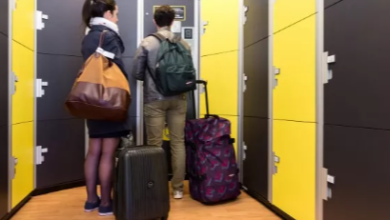Halloween Around the World: A Global Trick-or-Treat Adventure

This exploration reveals the distinctive ways in which diverse cultures celebrate Halloween, encompassing places as varied as Tokyo and Toronto, complete with costumes, candy and unique cultural nuances. Halloween—one term, yet countless interpretations. For many individuals, it represents a night filled with costumes and an abundance of treats.
However, for others, it signifies a plunge into eerie tales and longstanding haunted customs. In the United States, it is almost a cultural phenomenon; trick-or-treating serves as a significant rite of passage. Yet, if you venture beyond the confines of the American suburb, you will discover that Halloween—and the concept of trick-or-treating—assumes remarkably different expressions. Thus, let’s embark on a journey from one continent to another, uncovering how Halloween customs ignite the imagination, bring together communities and, indeed, fill those candy bags. So, grab a costume or your preferred treat—this adventure is about to commence.
U.S. Halloween: Candy Mania, Costumes and Community
In the United States, Halloween is a phenomenon that exceeds the ordinary. It serves as a vibrant festival characterized by costumes, haunted houses and candy empires (such as Hershey’s and Mars). The ritual itself is straightforward yet exhilarating: dress up, knock on doors and chant, “Trick or treat!” From coast to coast, communities undergo a transformation for this single night. Kids dart from one house to another, sharing tales of fright and collecting their preferred confections. In Salem, Massachusetts, Halloween is so grand that it spans the entire month.
However, Halloween transcends mere candy collection; it embodies a communal experience. “We make a big event out of it,” states Jessica Montgomery, a mother residing in Austin, Texas, where the neighborhood morphs Halloween into a celebration of togetherness. “Everyone decorates. Kids go door-to-door, but parents linger outside to converse and revel in the occasion. It’s almost like a spooky block party.” This unique blend of festivity and community spirit is what makes Halloween truly special.
Canada: Snowflakes and Ghosts
Situated just north of the United States, Canada approaches Halloween with a distinctly colder twist—literally. Early snowfalls in cities such as Toronto and Calgary often necessitate bulkier costumes. “I dressed up as Batman one year, but it was Batman under a parka,” laughs Mike Darnell (reflecting on his childhood Halloweens in Toronto).
Although the temperatures drop, Canada’s enthusiasm for Halloween remains robust, merging Celtic traditions introduced by Irish and Scottish immigrants with contemporary commercialized festivities. Major brands, including Nestlé Canada and Cadbury, go all out by releasing spooky-themed candies that glow in the dark and seasonal treats adorned with Halloween designs. This unique blend of past and present fosters a vibrant celebration, even when faced with the chill of autumn.
Japan: Where Cosplay Meets Halloween
In Japan, Halloween has taken on a unique identity, manifesting as an elaborate cosplay festival. Door-to-door trick-or-treating isn’t the primary focus here; instead, individuals flock to vibrant urban centers like Tokyo, particularly the fashionable Harajuku district, where Halloween becomes a grand spectacle. Imagine anime characters, Disney villains and even oversized sushi rolls!
“Costume-making is an art,” remarks Kiyomi Tanaka, a designer based in Tokyo. “Halloween is the one night we all come together to showcase what we’ve created.” Additionally, venues such as Tokyo Disneyland and Universal Studios Japan participate in the festivities, transforming their parks into enchanting Halloween wonderlands, replete with themed treats like pumpkin churros and ghostly cotton candy.
Mexico’s Día de los Muertos: A Celebration of Life and Legacy
Meanwhile, Mexico presents a different narrative: Halloween seamlessly merges into Día de los Muertos (Day of the Dead), a poignant and beautiful celebration that honors those who have passed away. This tradition emphasizes remembrance rather than fear. Families congregate in cemeteries, bringing pan de muerto (a special sweet bread) and adorning graves with marigolds, photographs and candles. Although the customs differ significantly, both cultures celebrate life in their own distinctive ways.
Rather than gathering candy, Mexican children pay tribute to their family’s spirits. “It’s (more than just) a holiday,” Carlos Medina from Mexico City elucidates. “My children assist in arranging the altar, lighting candles and presenting sugar skulls for their grandparents. We’re commemorating our family’s history; however, we’re not aiming to frighten anyone.”
The Philippines: A Halloween Hymn
In the Philippines, Halloween intertwines with a spiritual tradition referred to as Pangangaluluwa (a practice where children historically roamed from house to house, singing hymns in exchange for small treats or snacks). Although this custom has diminished in prevalence, it continues to exist in certain provinces and remains a component of All Saints’ Day festivities.
However, due to the influence of pop culture and Western traditions, younger Filipinos (particularly in urban areas like Manila) have adopted a version of Halloween that resembles the U.S. style, characterized by dressing up and engaging in trick-or-treating. “It’s a fun night for them to pretend and play,” Liza Dela Cruz, a mother from Manila, remarks. “My kids love it—they get to be vampires and superheroes for a night!” This blending of traditions highlights the dynamic nature of cultural practices in a globalized world.
Ireland: The Roots of Halloween
Ireland, recognized as the birthplace of Samhain (the ancient festival from which Halloween originated), takes great pride in its eerie heritage. In small towns, children still engage in the traditional practice of carving turnips, which serves as a nod to age-old customs. The night’s festivities encompass bonfires and games such as “snap apple,” where apples are suspended from strings and players attempt to take a bite.
Trick-or-treating remains vibrant and prevalent; however, it has evolved over time. “It’s an amazing thing,” shares Eoin O’Shea from Galway. “Knowing Halloween came from here adds a special magic. My kids hear tales of the spirits wandering on Samhain and this makes trick-or-treating that much more thrilling.” Although some might argue that these traditions have faded, the essence of the celebration endures.
Australia: Halloween with a Spring Fling
In Australia, Halloween represents a relatively novel tradition; however, it is one that is rapidly gaining popularity. Here’s the intriguing aspect: Halloween occurs during the Southern Hemisphere’s spring, which means that costumes tend to be lighter and festivities frequently extend into parks and beaches. Major retailers such as Woolworths and Coles adorn their establishments with Halloween displays, while local brands infuse a summery flair into conventional spooky treats. “People here adore it,” states Sophie Williams from Sydney. “We didn’t experience Halloween in our childhood, but now it’s ubiquitous.
Neighborhoods host barbecues, children don costumes and it serves as an opportunity to bond as a community. Halloween lacks the frightful elements here—it’s instead characterized by cheerfulness, light-heartedness and enjoyment.”
Read more: How to Choose the Perfect Watch for Your Lifestyle and Budget
The Heart of Halloween: A Night of Stories Shared
From the bustling streets of Tokyo to the enchanting landscapes of Ireland, Halloween embodies a night dedicated to storytelling, costumes and confections. Every nation contributes its distinct interpretation, yet the fundamental essence remains consistent: to congregate, to engage in playful activities and to immerse oneself in the enchantment of imagination.
As October 31 draws near, it is crucial to remember that trick-or-treaters (of various kinds) are roaming the streets of the world—some adorned in costumes, others paying homage to family and still others reveling in cosplay. This night, filled with ghosts and goblins, serves as a testament to our collective affection for the mysterious, the magical and, above all, the sweetness of community. However, it is fascinating to consider how this tradition has evolved over time; the essence remains, although the expressions may differ. However, the charm of this night lies in its ability to bring people together.




